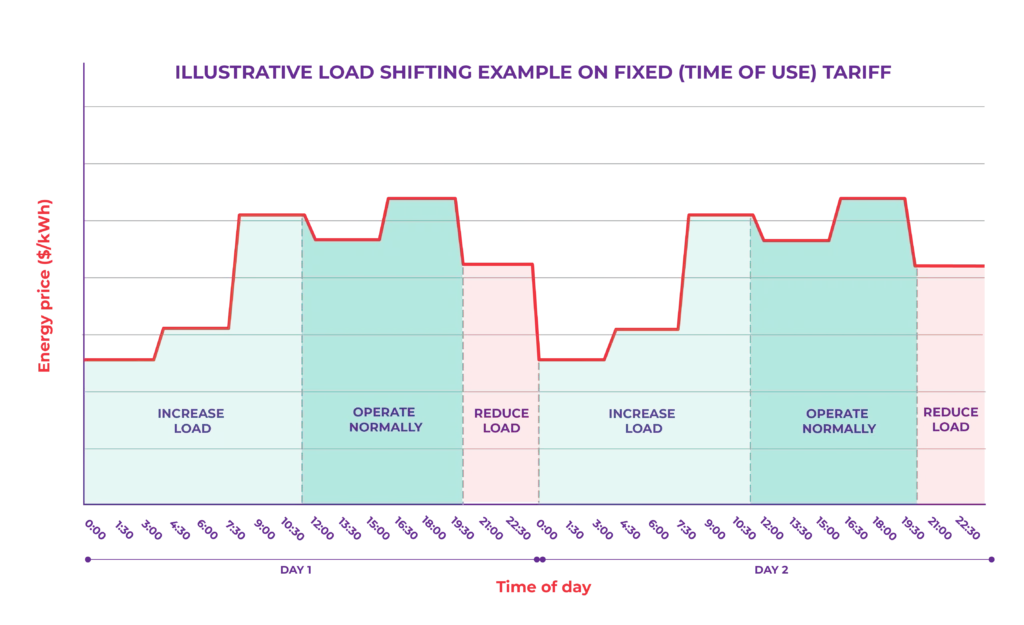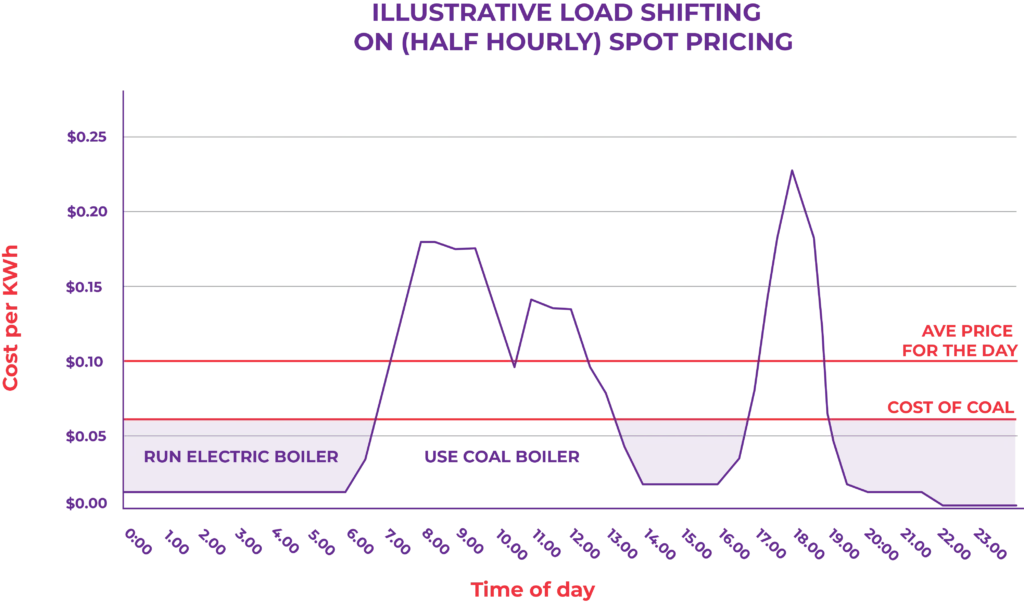You can take control of your energy costs and carbon footprint by adjusting your power usage, such as aligning it with periods when network tariffs, electricity prices, and the carbon intensity of the grid are lower, or reducing consumption when they’re higher.
You can utilise Energy Flex regardless of how you pay for electricity or who supplies it to you.
Fixed pricing, also known as fixed price, variable volume (FPVV) or time of use (TOU), is a model where you have a clear price schedule. Prices are set in 4-hour blocks, and you pay different rates for peak and off-peak electricity use. This makes it easier to identify peak periods.
Energy Flex enables you to automatically align your electricity consumption with periods of low cost. You retain full control, deciding when and how frequently your equipment operates.

Spot pricing is a model where you pay the wholesale price of electricity. This price is set every half hour in line with demand and generation.
Energy Flex enables you to automatically adjust your electricity usage in response to spot prices. You set your price thresholds to ensure you operate only when prices are favourable. We’ll monitor the 4-hourly forecasted wholesale price and signal to operate at any price threshold you choose, for periods as short as half an hour.

Energy Flex also offers a smart way to transition away from using fossil fuels at your site. For example, if it’s not economical to fully replace an existing fossil fuel asset today, such as a boiler, as an interim step, you can alternate between a new electric and fossil fuel boiler based on real-time pricing—reducing cost and carbon and providing operational resiliency.
Whether you’re managing boilers, refrigeration units or other energy-intensive equipment, Energy Flex can help you power operations more economically and sustainably.
Energy Flex can help you save costs and carbon by shifting existing electricity consumption to periods with lower costs and lower grid emissions, and support you in electrifying your operations.
It also enables you to contribute to a more resilient grid, decreasing the need for fossil fuel plants and costly infrastructure upgrades to handle peak electricity demands.
We’ll help you select suitable electrical equipment, identify metering and assess the potential revenue you can expect from participating. Once we’ve agreed on the terms of your participation and installed our Simply Flex Hub to signal when to ramp up and down, you can reduce your load and respond to price signals.
If you’re considering a large electrification project, we offer an advisory service where we can undertake more comprehensive modelling to optimise your potential cost and carbon savings.
See how we’re helping businesses across New Zealand make meaningful change.

Leave us your details and we’ll be in touch.
In essence, demand flexibility is the ability to adjust your electricity use. It involves activities such as shifting energy use to lower cost periods, reducing non-critical loads during peak periods, and utilising stored energy, such as batteries, to support the grid by injecting electricity into the network. This approach helps optimise existing infrastructure, minimise costs, and enhance grid stability.
Demand flexibility benefits both business and the electricity system by supporting resilience, affordability, and sustainability. As demand grows and more intermittent renewables, such as wind and solar come online, your flexibility can help balance fluctuations in supply, lower emissions, reduce infrastructure needs, and lower electricity prices.
Many industries, such as cold storage, food processing, manufacturing, data centres, pools, and water treatment facilities, can support demand flexibility.
Suitable equipment includes:

If you have an asset that stores energy or can adjust its operation without disrupting operations, you may be able to use it to help you save costs and stabilise the grid.
Your equipment doesn’t need to run constantly, but the total average consumption of flexible equipment across the site should be at least 200 kW.
Yes, your site can be located anywhere across New Zealand.